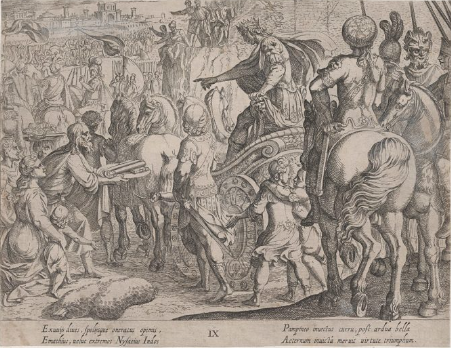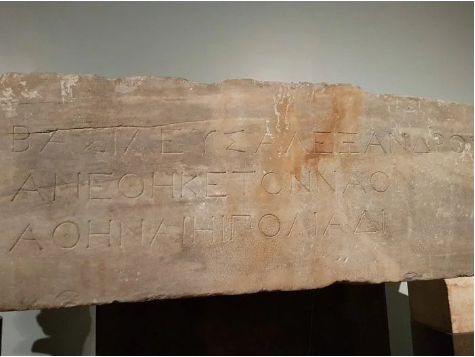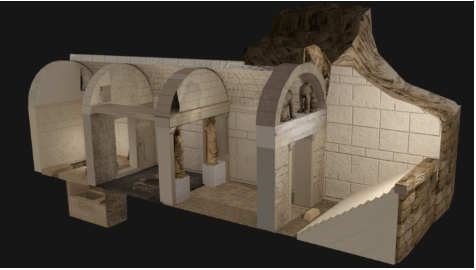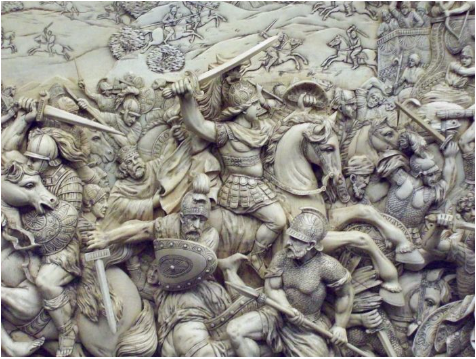
One of the biggest mysteries in the world to this day is the location of Alexander the Great’s tomb, which has been sought after by historians and researchers for more than 2,300 years.
Numerous references date back to the Roman era, when historians documented the Roman emperors’ trips to the famous general’s tomb at Alexandria. The idea that the great Greek military genius and conqueror of Asia would want to be buried in the city that bears his name is understandable to many.
However, conjectures concerning the whereabouts of Alexander the Great’s tomb have been rife for generations; some of them border on fiction. The most recent report on purported proof that the renowned tomb might have been found in the Siwa Oasis near Marai was made by an Egyptian tourism official. There was a temple there honoring Amun, the principal deity of Egypt, whom the Greeks referred to as Ammon and identified with Zeus. Yes, that was Alexander’s favorite location.
Memphis’s first funeral
Alexander’s first burial place was Memphis, Egypt, according to historian Pausanias and texts from the Panan Chronicle during the time between 321 and 321 BC. Ptolemy was one of Alexander’s generals. Alexander’s body was moved from Memphis to Alexandria in the late 4th or early 3rd century BC, during the early Ptolemaic dynasty. His sarcophagus was then positioned in the Serapeum complex, which Pharaoh Nectanbo II had constructed.
Most people believe that the Tomb of Alexander the Great is located in Alexandria.
Roman emperors pay a visit to the Alexandrian tomb
According to modern historians, a number of Roman emperors expressed their respect for the Greek conqueror of Asia’s achievements and acknowledged his grandeur. In 48 BC, Julius Caesar paid his homage to the Tomb of Alexander the Great in Alexandria. Afterwards, Queen Cleopatra used the treasure in the tomb to pay for her military campaign against Roman Emperor Octavian.
After Cleopatra passed away, Augustus went to Alexander’s tomb in Alexandria. It was reported that he had placed a golden diadem on the general’s head and flowers on the tomb. According to a different Roman historian, Caligula went to Alexander the Great’s grave and stole his breastplate.
When Septimius Severus visited the tomb at Alexandria in 199 AD, he gave the order to seal it to prevent further looting. Caracalla moved certain treasures from Alexander’s tomb in 215 AD. He took Alexander’s belt, ring, and tunic, among other priceless pieces, and placed them inside the coffin.
Sea levels rose in 356 AD, causing a tsunami to overwhelm the city following a string of earthquakes. Since Alexander’s time, Alexandria has gradually sunk up to twelve feet due to the floods of the Nile Delta. Essentially, a large portion of the ancient city, which the new city is built upon, and Alexander’s burial site must have fallen very deeply into the ocean floor by this point.

Egypt as Alexander the Great’s last resting place
Although the tomb of Alexander the Great is said to be in Alexandria, the Egyptian Supreme Council for Antiquities has documented 140 unsuccessful attempts to find it. Numerous ideas have been proposed regarding the precise location of Alexander’s tomb as a result of these efforts, the most ancient of which holds that it is in the heart of the old city. This hypothesis was supported by several 19th-century academics, including Tasos Neroutsos, Heinrich Kiepert, and Ernst von Sieglin.
Ambroise Schilizzi declared in 1850 that Alexander’s purported mummy and tomb had been found within the Alexandrian Nabi Daniel Mosque. However, no authorization was provided for excavation, nor was it later granted.
The theory of Venetian
Even more, there is a myth that claims the grave of Alexander the Great is in Venice, more precisely in St. Mark’s Cathedral. Many academics reject the notion, arguing that it is unrealistic and has too strong religious overtones. The specific hypothesis is that Alexander’s tomb would have to be removed because the Arabs, who had taken control of Alexandria, intended to eradicate all pre-Islamic from the city. Alexander had been revered as a deity.
Additionally, Mark, one of the four authors of the Christian Gospels and the patron saint of Venice, was buried in Alexandria. According to a variant of the Venice myth, Alexander’s bones—which are thought to belong to Saint Mark the Evangelist—were taken by Venetian traders and moved to the saint’s church in Venice.

The Lost Tomb of Alexander the Great author Dr. Andrew Michael Chugg appears to have modified the theory based on a fragment of the pharaoh Nectanbo II’s tomb. Pharaoh Nectanbo II constructed Alexander’s first tomb in Memphis, which is located inside the Serapeum complex. Alexander the Great’s tomb may have been located within that complex based on the sculptures of Greek poets and philosophers.
The measurements of Nectanbo II’s sarcophagus at the British Museum match a piece of masonry discovered in the foundations of Saint Mark’s in Venice, which is astonishing and suggests that Alexander’s tomb lies inside Saint Mark’s tomb beneath the Basilica.
Given that Alexander’s body vanished in 392 AD and Saint Mark’s tomb emerged at the same time, Chugg surmises that the body was taken by Venetian traders who thought it belonged to Saint Mark.
Stranger things have, in fact, happened throughout history.
Is Vergina home to Alexander the Great’s grave?

The notion that Alexander the Great is buried in the royal tomb II in Vergina, Greece, while his son Alexander IV is buried in tomb III was proposed in 1993 by Greek archaeologist Triantafyllos Papazois. Papazois came to the further conclusion that the sword, helmet, breastplate, and shield discovered in tomb II are pieces of Alexander the Great’s armor.
The archaeologist’s theory has never been validated, though.
The Amphipolis Tomb’s mystery
The news of Alexander the Great’s tomb being found at Amphipolis, northern Greece, shocked both Greece and the rest of the globe in 2014. Once more, questions concerning Alexander’s ultimate resting site were raised by the sizable Alexander-era tomb at Kasta hill near Amphipolis. Some have conjectured that because Ptolemy I. Soter took control of the funeral cortege and steered it away from its intended destination, it was erected for Alexander but never used.
The site’s discoveries raised the possibility that it was a memorial honoring Hephaestion, a close friend of Alexander’s. Andrew Chugg speculated that either Alexander’s wife Roxanne or his mother Olympias is buried in the tomb, with the former being the most likely.

Approaching the Tomb of Alexander the Great
Calliope Limneos-Papakosta, a Greek archaeologist, has dedicated her life to locating Alexander the Great’s tomb, the study community’s Holy Grail. For more than fifteen years, Limneos-Papakosta, the director of the Hellenic Research Institute of the Alexandrian Civilization, has been conducting archaeological digs in locations around the Shallalat Gardens, a public park located in the center of Alexandria.
In order to uncover the guy after whom Alexandria is named, the Greek archaeologist and her colleagues excavated more than 10 meters (35 feet) beneath the present-day city. The first roadways constructed in the city were discovered by Limneos-Paleokosta and her colleagues, together with the foundation of a massive public edifice spanning more than 200 feet; they surmise that this location is the old royal district.
To enable them to carry out their excavation, the archaeologist and her group set up a complex pumping system that dried up the surrounding soil. Limneos-Papakosta persevered and her team found an early Hellenistic statue that had characteristics of Alexander the Great, bringing much-needed optimism to her endeavor.
There is no doubt that “Alexander the Great, the Spear Bearer” is shown in the marble statue. It was made using the same method as the renowned sculptor Lysippus, which involved tilting the head to the side and downward. Now that everyone agrees that the monument depicts the renowned general, it is on display in the National Museum of Alexandria. Maybe this indicates that we are actually getting closer than ever to solving the big mystery surrounding Alexander the big’s tomb.
But it’s also possible that the great conqueror, who thought he was Zeus’ son, may stay hidden deep in the annals of time, immortal for all eternity.
